I'm currently working on a problem where I want to maintain the convex hull of a set of linear functions. It might look something like this:

I'm using a set<Line> to maintain the lines so that I can dynamically insert lines, which works fine. The lines are ordered by increasing slope, which is defined by the operator< of the lines. By throwing out "superseded" lines, the data structure guarantees that every line will have some segment that is a part of the convex hull.
Now the problem is that I want to search in this data structure for the crossing point whose X coordinate precedes a given x. Since those crossing points are only implicitely defined by adjacency in the set (in the image above, those are the points N, Q etc.), it seems to be entirely impossible to solve with the set alone, since I don't have
- The option to find an element by anything but the primary compare function
- The option to "binary search" in the underlying search tree myself, that is, compute the pre-order predecessor or successor of an iterator
- The option to access elements by index efficiently
I am thus inclined to use a second set<pair<set<Line>::iterator, set<Line>::iterator> > >, but this seems incredibly hacky. Seeing as we mainly need this for programming contests, I want to minimize code size, so I want to avoid a second set or a custom BBST data structure.
Is there a good way to model this scenario which still let's me maintain the lines dynamically and binary search by the value of a function on adjacent elements, with a reasonable amount of code?